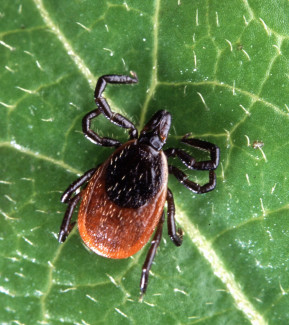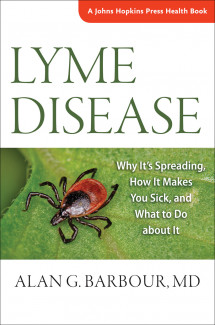
Johns Hopkins UniversityEst. 1876
America’s First Research University
Lyme Disease update: A second deer tick microbe causes Lyme in North America

Guest post by Alan Barbour, MD
(With Lyme disease on the move and in news, we invited Lyme Disease author Dr. Alan Barbour to contribute regular updates to the JHU Press blog. His posts will highlight the latest findings on Lyme and other deer tick-associated infections and share insights on diagnosis, treatment, and prevention that are reported in the medical literature and other sources. For more frequent short updates and tips, follow Dr. Barbour on Twitter: @alanbarbour.)

There is only one medical journal article to date about B. mayonii in humans, so there is still much to be learned. But so far, there is evidence that B. mayonii may achieve higher levels of bacteria than B. burgdorferi in the blood during infection. This may be associated with a higher frequency of multiple skin rashes and a greater likelihood of hospitalization. The report focused on cases from the upper midwestern United States. In this region B. mayonii was identified in deer ticks, but it was less common than B. burgdorferi in ticks collected at the same locations and time. Whether B. mayonii occurs in other parts of the United States or Canada is not yet known.
Effective antibiotic treatment of Lyme disease caused by B. mayonii probably will not differ from treating disease caused by B. burgdorferi. But the discovery of a second Lyme disease species may cause a re-evaluation of some diagnostic assays. There may be enough differences between the two bacteria that an antibody test that solely uses B. burgdorferi cells as the target for the patient’s antibodies may have somewhat lower sensitivity when the patient has been infected with B. mayonii.
Since both B. mayonii and B. burgdorferi are carried by the deer tick Ixodes scapularis, the effective measures for reducing the risk of tick bites (which are described in the book) should suffice for protection against both pathogens. A possible exception among prevention options may be canine Lyme disease vaccines that are based on B. burgdorferi or one of its purified protein. Whether there is cross-protection is not known.



